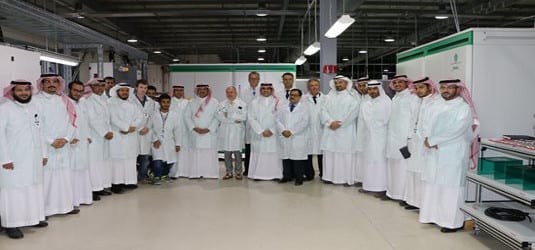
Advanced Electronics Company
Deputy crown prince of the Kingdom of Saudi Arabia Mohammed bin Salman announced the “Saudi Arabia Vision 2030” paper today, which targets 9.5 GW of renewable energy, but doesn’t specify a timeframe or which renewables will be deployed.
After making a pledge in 2012 for 41 GW of solar capacity by 2032, followed by scant little PV added since then, it would be understandable for onlookers to perceive the country’s renewable energy targets with an air of skepticism. The new target, outlined in the “Saudi Arabia Vision 2030” paper, does little to alleviate such suspicions, with an enigmatic pledge to install 9.5 GW of renewable energy capacity.
The announcement of the paper was made by deputy crown prince Mohammed bin Salman. Within the paper the “initial” target of 9.5 GW of renewable energy is covered under a new “King Salman Renewable Energy Initiative.”
The paper mentions local manufacturing and research into renewable energies, but mysteriously it does not set any timeframes for the goal to be reached 9.5 GW, neither does it outline which renewables the capacity will be spread between. As the paper is titled “Vision 2030,” it may be deduced that the target is for 2030, but without any official confirmation it is hard to tell.
Based on an assumption that the target is for 2030, that would mean average installations of around 700 MW every year, representing a decent opportunity for renewable energy investors. However, if previous Saudi renewable energy targets are to be used as benchmarks, it is far from sure that this new goal will be achieved.
The example that is freshest in the memory was the pledge of 41 GW solar capacity by 2032, made in 2012 by the King Abdullah City for Atomic and Renewable Energy (KA-CARE). If the Saudi government had followed through with the pledge at the time the target was set, it would have made the country one of the biggest solar markets in the world by now.
However, none of the plans set out in K.A.CARE’s whitepaper were acted upon, and the PV market remains dormant in Saudi Arabia. It will now be interesting to see whether the new paper can reverse the previous trend.
Source: PV Magazine. Reproduced with permission.







